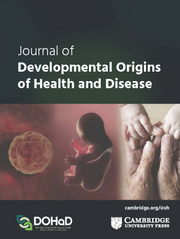No CrossRef data available.
Article contents
Supplementation of diet with Astaxanthin and DHA prevents gestational and lactational undernourishment-induced metabolic derangements in dams: a metabolomic approach
Published online by Cambridge University Press: 28 November 2024
Abstract
Nutrition is the critical nongenetic factor that has a major influence on the health status of an organism. The nutritional status of the mother during gestation and lactation plays a vital role in defining the offspring’s health. Undernutrition during these critical periods may induce chronic metabolic disorders like obesity and cardiovascular diseases in mothers as well as in offspring. The present study aims to evaluate the impact of undernutrition during gestational and lactational periods on the plasma metabolic profile of dams. Additionally, we investigated the potential synergistic mitigating effects of astaxanthin and docosahexaenoic acid (DHA) on dysregulated plasma metabolic profiles. Evaluation of plasma lipid profile revealed that undernourishment resulted in elevated levels of total cholesterol, triglycerides, low density and very low-density lipoproteins in dams. Liquid chromatography-tandem mass spectrometry (LC–MS/MS) based untargeted metabolomics illustrated that pathways related to lipid metabolism, such as cholesterol metabolism, steroid biosynthesis and metabolism of amine-derived hormones, were dysregulated by undernourishment. Additionally, pathway enrichment analysis predicted that there is a high incidence of development of desmosterolosis, hypercholesterolaemia, lysosomal acid lipase deficiency and Smith–Lemli–Opitz syndrome in the offspring, reflecting predisposition in mothers. However, synergistic supplementation of astaxanthin and DHA ameliorated these adverse effects by regulating a separate set of metabolic pathways associated with lipid metabolism. They included branched chain amino acid degradation such as valine, leucine and isoleucine, metabolism of alpha-linolenic acid, lipoic acid, lysine degradation, biosynthesis, elongation and degradation of fatty acids.
Keywords
- Type
- Original Article
- Information
- Copyright
- © Dmodara Gowda K M, 2024. Published by Cambridge University Press in association with The International Society for Developmental Origins of Health and Disease (DOHaD)



